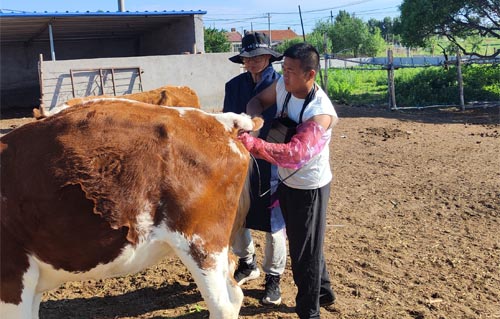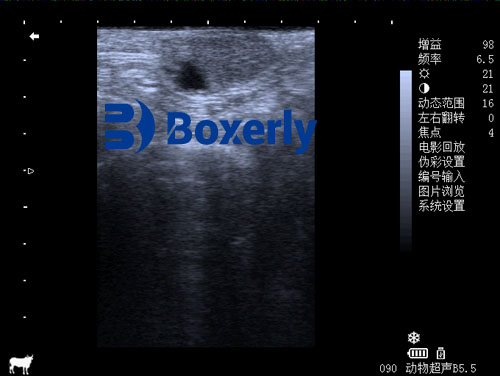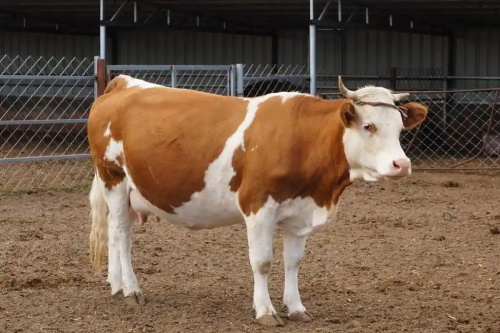When it comes to running a successful veterinary clinic—especially one serving livestock like cattle, 豚, 馬匹, 羊, and camels—investing in the right sonography equipment is critical. Ultrasound machines are indispensable tools for diagnosing reproductive issues, internal injuries, and diseases in farm animals. But with so many models and features available today, how do you choose the right veterinary ultrasound machine for your practice?

この記事の内容, we’ll walk through key considerations, must-have features, and practical tips to help you make the best investment for your clinic.
Understanding Your Needs: Species, 設定, and Applications
Before you even start looking at brands and models, it’s essential to define your clinical needs. Are you mainly working with cattle reproduction (e.g., pregnancy checks)? Do you focus on equine tendon assessments or camelid abdominal exams? Different species and different tasks demand different machine specifications.
-
牛 (Bovine Reproduction): You’ll need a rugged, portable ultrasound with good penetration for deep imaging through thick abdominal walls.
-
豚 (Swine Imaging): Fast, efficient scanning with wide probes helps with high-volume pregnancy checks.
-
馬匹 (Equine Orthopedics and Reproduction): High-resolution imaging is crucial, especially for tendon, ligament, and reproductive assessments.
-
Sheep and Goats (Small Ruminants): Compact probes and good battery life are key for fieldwork.
-
ラクダ: Strong depth penetration and adjustable frequency are important, given their size and anatomical structure.
In short, think about the species, typical exam types, and whether you’ll be working in a barn, pasture, or clinic setting.
Key Features to Look For
Here’s a breakdown of critical features you should prioritize when selecting a veterinary ultrasound machine for large animals:
1. Portability and Durability
Farm work is tough. Whether you’re out in a dusty corral or in a muddy pasture, you need equipment that can handle rough conditions. Look for machines that are:
-
Lightweight and battery-powered
-
Water-resistant and dustproof
-
Equipped with reinforced casings to survive accidental drops
例えば, handheld units like the Easi-Scan:Go series are popular among cattle vets because they combine portability with rugged design.

2. Image Quality and Depth Penetration
Large animals have thick skin, muscle layers, and sometimes a lot of fat. To obtain clear images, you’ll need:
-
A machine that supports lower-frequency probes (2-5MHzの) for deeper penetration
-
The ability to switch to higher frequencies for more detailed superficial scans when necessary
-
Good contrast resolution for differentiating soft tissues
Modern systems like the E.I. Medical Imaging Ibex EVO II offer excellent penetration without sacrificing image clarity.
3. Probe Options
The right probe is just as important as the ultrasound unit itself. Common probe types include:
-
Linear Probes: Best for tendon imaging (equine sports medicine)
-
Convex (Curved) Probes: Ideal for abdominal and reproductive exams in large animals
-
Rectal Probes: Essential for transrectal reproductive exams in cattle and horses
Choosing a machine that allows easy probe interchangeability increases versatility and long-term value.
4. Battery Life and Charging Flexibility
Fieldwork often means being away from electrical outlets. Prioritize systems with:
-
Extended battery life (at least 3–6 hours)
-
Fast recharging capability
-
Optional external battery packs or vehicle chargers
Nothing is more frustrating than running out of power in the middle of a busy day on the farm.
5. Software and Connectivity
Modern veterinary sonography machines offer smart features like:
-
Wireless image transmission (to tablets or smartphones)
-
Cloud storage for case management
-
Integrated measurements and reporting templates (especially useful for herd management)
Having the ability to share scans with clients or consult with specialists remotely can be a game-changer for rural practices.

Brand Recommendations
While many companies manufacture veterinary ultrasound equipment, a few brands consistently stand out for farm animal applications:
-
E.I. Medical Imaging (米国): Known for rugged, field-tough units.
-
Draminski (ポーランド): Offers affordable, reliable handheld options for farm use.
-
BXL(ビーエル) (中国): Provide versatile machines with excellent image quality at competitive prices.
-
IMV Imaging (UK): Offers specialized systems tailored to livestock reproduction.
Always request a demo or trial period before making a final purchase. Seeing how the machine performs under real working conditions is invaluable.
Budget Considerations
Veterinary ultrasound machines range from $4,000 for basic handheld units to over $20,000 for premium cart-based systems. Factors that impact price include:
-
Image resolution
-
Probe types included
-
Software features
-
Brand reputation and warranty support
Think of your purchase as a long-term investment. Choosing a machine that balances cost, quality, and future expandability will serve your clinic better in the long run.

Training and After-Sales Support
最終的に, consider the level of training and technical support available. Even the best ultrasound won’t deliver its full potential without proper training. Some suppliers offer:
-
On-site training sessions
-
Online tutorials
-
24/7 カスタマーサポート
-
Rapid spare parts delivery
Good support can greatly reduce downtime and frustration, keeping your practice running smoothly.
結論
Choosing the right veterinary sonography machine for your clinic isn’t just about buying the most expensive model or the one with the flashiest features. It’s about understanding your practice’s specific needs, the species you serve, and the types of procedures you perform most frequently. By prioritizing portability, 画質, battery life, probe versatility, and reliable after-sales support, you’ll be setting your clinic—and your patients—up for success.
Whether you specialize in cattle pregnancy checks, equine orthopedics, or general farm animal medicine, the right ultrasound machine is an investment that will pay for itself many times over through faster diagnoses, improved patient care, and happier clients.